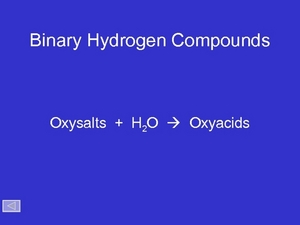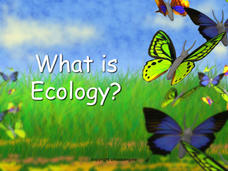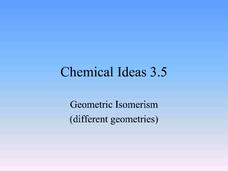Curated OER
Functional Groups ~ What is the Family Name?
These 37 slides start with definitions of six types of functional groups, their molecular structure, and multiple examples or each. During the rest of the presentation, organic chemistry learners are given an opportunity to practice...
Curated OER
Binary Hydrogen Compounds
Viewing this slide show prepares your chemistry scholars for chemical nomenclature. Specifically, binary hydrogen compounds and ternary compounds formed from oxyacids are dealt with. One highlight is a useful graphic organizer for naming...
Biology Junction
What Is Ecology?
Do you know the name for the biological study of interactions? A short presentation with accompanying worksheet introduces individuals to ecology. The materials offer a broad overview of the subject and the levels of organization to...
Curated OER
Alcohols Revisited (and Ethers) and Going Further... Carboxylic Acids and Their Derivatives
Identifying characteristics of alcohols and their physical properties are reviewed in bullet-point fashion on the first two slides. The same material follows, but for ethers. Finally, the structure and naming of carboxylic acids and...
Curated OER
Chemical Equations and Reactions
Graphic organizers, photos, diagrams, and text bring the world of chemical reactions to life. By viewing this presentation, young chemists learn how to recognize when a chemical reaction has occurred, and how to balance chemical...
Curated OER
Geometric Isomerism (Different Geometries)
Here is an interactive presentation on molecular geometry if you have materials for building molecule models along the way. Isomerism is introduced by means of a graphic organizer. Viewers then imitate two molecule models and learn that...
Curated OER
Metabolism & Enzymes
More extensive than just a general overview of digestion and reactions, this slide show gives information about all areas of enzyme function. Topics like the chemistry behind efficiency of enzymes, factors that affect speed of...
Curated OER
Respiration
This series opens with diagrams of experimental setups. A data table is displayed and questions are asked, indicating that the intent is for lab groups to perform the depicted experiments. At slide twelve, a coherent lesson about the...









